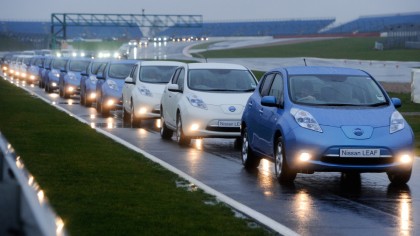Could device-to-device be the next big thing?
Phones of all flavours should get LTE Direct next year
Can you make phone calls on LTE Direct for free?
Sadly not. "You still need the presence of a cell tower because for security reasons you need to synchronise, identify and authenticate the devices communicating on the network," says Sorell. "So you won't be able to get free phone calls."
However, the call itself won't be hosted on the network, going direct from one phone to another if they're within 500m of each other. "Free calls might be something that comes in the future," notes Sorrell, who says that direct point-to-point communications not involving a basestation are only possible for use by emergency services. The US, UK and South Korea should have such a public safety LTE network by 2017.
While LTE Direct will be largely invisible to users, it could mean better quality of calls. "You'll potentially reduce latency and because it's a peer-to-peer connection there's the potential for higher bandwidth, too," says Sorrell.
Does this mean a future without cell phone towers?
No. Relaying messages from phone to phone might sound like an off-grid future where our phones are nodes on a network, but that's unlikely. "Mesh networking decentralises communications," says Philip Williams, Principal Architect, Rackspace, adding that external networks will continue to exist even if only as a point of entrance or exit to a meshed network.
"For example, when making an international phone call, a meshed network may exist within a metro-area, but in order to get hold of someone on another landmass, the device will have to interact with another centralised network in order to communicate over thousands of miles," says Williams.

Is there a security risk?
Qualcomm states that the 'technology allows for the anonymous discovery of other devices and doesn't track location or device data'.
"Any technology that has the ability to track users does have inherent security and privacy risks," says Curran, who doubts that LTE Direct's device-level transmitting and monitoring will interest network operators. "I strongly suspect that mobile operators will operate a centralised proximal device discovery database, and that can certainly be a target for hackers," he says, adding that since it's a proprietary technology external experts have not yet audited it to ascertain the level of risk.
Sign up to the TechRadar Pro newsletter to get all the top news, opinion, features and guidance your business needs to succeed!

How will the connected car benefit?
This is perhaps the killer app – and it's getting the automotive industry excited. "Two vehicles with LTE Direct could communicate, with one telling the other that there is a traffic bottleneck ahead, and that message could be transferred to other vehicles using mesh paradigms," says Saadi. "And when the two vehicles are in close proximity it could warn one car that he's getting too close." Vehicle-to-vehicle communications is an underlying technology for autonomous, self-driving cars, so LTE Direct could have a massive future.
When will we see LTE Direct in phones?
The specification of LTE Direct was finished in March this year, and there have already been trials in Germany and South Korea, with further trials planned for the US, Europe and South Korea – and with both Yahoo and Facebook – but there could be a wait. "I wouldn't expect to see any devices until at least next year, and the use of the tech would be in 2017," says Sorrell.
The catalyst for mass adoption of LTE Direct could be the burgeoning Internet of Things. Offloading 4K video to avoid bottlenecks in built-up urban areas is one thing, but the spectre of 50 billion connected devices by 2020 is something else. "Anything that can take traffic away from the network will be beneficial," says Sorell. LTE Direct may never be headline news, but it's destined to be part of a suite of D2D technologies that allow the IoT to become something more than an ambition.
Jamie is a freelance tech, travel and space journalist based in the UK. He’s been writing regularly for Techradar since it was launched in 2008 and also writes regularly for Forbes, The Telegraph, the South China Morning Post, Sky & Telescope and the Sky At Night magazine as well as other Future titles T3, Digital Camera World, All About Space and Space.com. He also edits two of his own websites, TravGear.com and WhenIsTheNextEclipse.com that reflect his obsession with travel gear and solar eclipse travel. He is the author of A Stargazing Program For Beginners (Springer, 2015),
